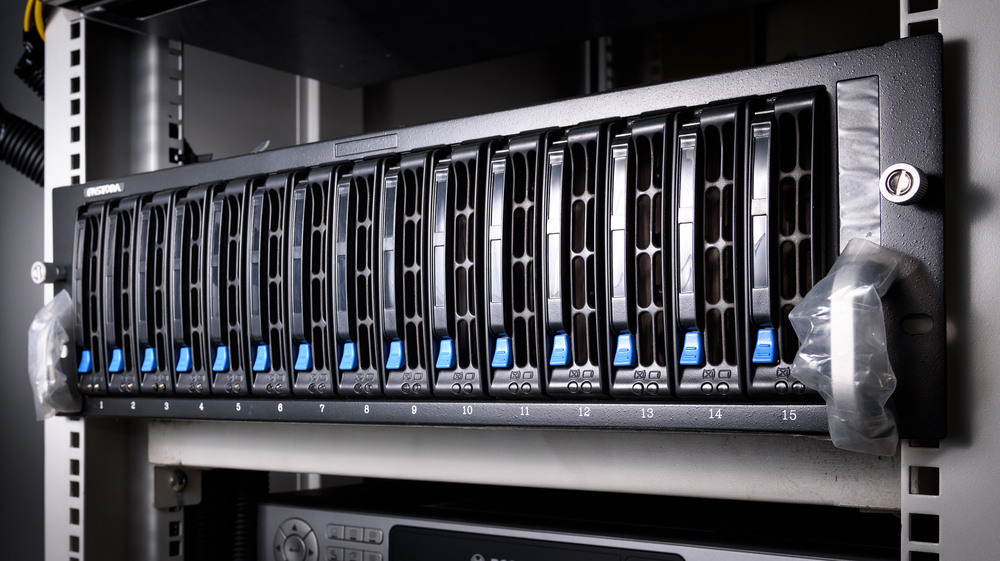
Web hosting technology has progressed in leaps and bounds over the past couple of decades or so, and today we see servers that can deliver the same premium quality of speed and uptime to clients, even if they are located on opposite sides of the globe. Hosting providers have become so competitive that despite the advance in technology the price for their services has continued to spiral downwards. Some of the best hosting providers in the business today offer premium packages that only cost a few cents per month.
One such great and relevant technological aspect that is beneficial to clients looking for a hosting solution – be they individuals or businesses – is RAID.
What is RAID?
RAID stands for “Redundant Array of Independent/Inexpensive Disks.” The concept was first developed in 1987 at the University of California in Berkeley. A year later, IBM filed the first patent for what would eventually be known as RAID 2.
Before you turn away from what you are assuming is an “old” and “cheap” technology, you should know that it is one of the most commonly used way of ensuring data redundancy and security today.
The basic concept is that RAID is an array or set of inexpensive (relatively, i.e.) hard disk drives that have been brought together so that they appear as one large disk entity to any device that connects to them. This is achieved via storage virtualization.
How does it work?
The data that is to be stored on the drive(s) is kept in one of many arrays which are also known as “RAID levels.” This depends on the amount of redundancy or performance that is required – storage on higher drive levels ensures more of both.
The different levels are labeled RAID 0, RAID 1, etc. As the number increases, the amount of balance that comes with the data storage (including reliability, availability, performance, and capacity) also increases, but examples of their basic unique features include:
- RAID 0 – Striping
- RAID 1 – Mirroring
- RAID 5 – Striping with parity
- RAID 6 – Striping with double parity
For example, all RAIDs that are greater than 0 offer safety from unrecoverable sector read errors and protection against data loss in case the whole drive crashes. The latest technology offers RAID 6 which is made of block-level striping and double-distributed parity which offers fault tolerance of up to two failed drives. In this configuration a minimum of 4 disks are used together. But then again there is the RAID 10 which is a combination of RAID 1 and RAID 0 – combining the mirroring of the former and the striping of the latter – and allows for the writing of data on two or more disks at the same time. The failure of one of the disks only means data recovery can be done from the other one(s) until the failure has been corrected.
What are the advantages for small business websites?
Data Safety – as mentioned above, the main advantage of opting for a hosting provider that has implemented RAID servers is that the chances of losing data are very small. With your data being written on more than one server at the same time, you can rest assured that even if one of them were to be completely destroyed, you would still be able to continue with the other one(s).
No Need for Backups – RAID helps in ensuring that you do not need to worry about data backups. The cost of taking backups, storing them safely, and then restoring them in case of data loss becomes unnecessary. You save time, effort, and money. And besides, unless you are extremely careful and diligent about taking your backups, there is no guarantee that you will even be able to get all of your data back.
Of course, if you still think you need to keep backups and have the resources to store it safely, by all means, go ahead and do so. But, remember you are just being overcautious. With RAID this fear is allayed: The higher the RAID number, the better the chance of your data achieving “god” mode.
It is Cheap – in case, after reading so far, you were wondering if RAID technology is expensive, the answer is “no.” What with the price of hard disk drives falling by the day, all it takes to create a functioning RAID set is the purchase and implementation of just two drives. If you can mirror one drive with another one you will have doubly protected your data. It also doesn’t require a rocket scientist to set it up – with all the instructions available on the internet, almost anyone with the basics of system administration can set it up for you. Of course, in a business scenario the involvement of a professional is always advised.
A web hosting provider that really cares about you will make sure you have RAID at your disposal – at no extra cost. It is a technology that has become the norm rather than the exception.



















